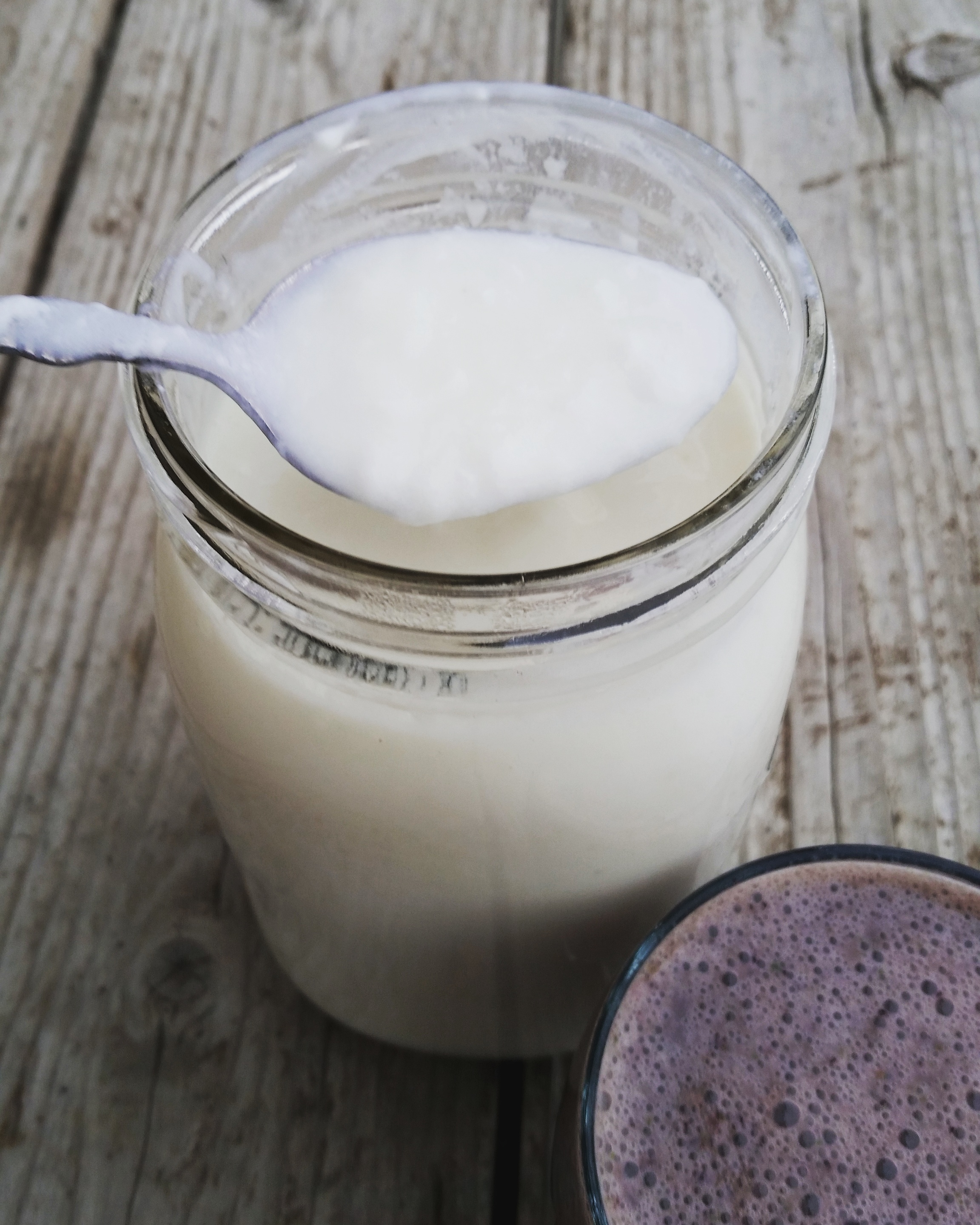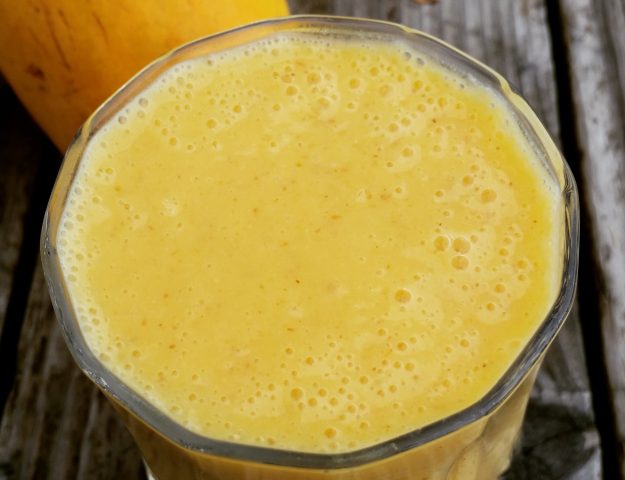Feeling Good With Kefir

After learning that its health benefits range from cancer prevention to stomach flu cure, we have recently added Kefir to our diet. The word, Kefir, is derived from the Turkish word, Keyif, which translates to “feeling good” after it is eaten. After drinking it for the last three months, I commend the Turks for giving these lovely grains such a fitting name! Much of the information below comes from a scholarly article from the National Center for Biotechnology Information.
Production of Kefir
Kefir is a natural probiotic dairy beverage. To make the drink, Kefir grains acting as a culture starter are added to cow’s milk at room temperature and soaked for 18 to 24 hours. The yeasts and bacteria contained in the grains ferment the milk and create probiotics (healthy bacteria). At the end of fermentation, the grains are removed and the beverage is refrigerated. Kefir grains can be dried and reused repeatedly for up to 18 months. When soaking in milk, Kefir grains will multiply in size and number, and that is how you know that they are still working. After the grains multiply, they can be dried and shared as a culture starter for a friend. If you want to make your own Kefir beverage, Mel’s Kitchen Café has a wonderful tutorial. I make my own out of milk kefir grains from Whole Foods Market.
Health Benefits
- The probiotics contained in Kefir can treat and prevent gastroenteritis (stomach flu) and yeast infections. In our home, I use Kefir after someone in the house has battled a case of the stomach bug or has been taking an antibiotic. It helps to replace the “good” bacteria that was lost during illness.
- In Russia, researchers are using Kefir to treat ulcers in both the stomach and large intestine.
- Kefir and other fermented dairy beverages have anticarcinogenic properties, preventing cancer and early-stage tumor growth. The probiotics in Kefir do this in two ways: 1. by blocking the enzymes which turn pre-carcinogenic compounds into carcinogens and 2. by activating the immune system to attack the cancer on its own.
- The active ingredients formed in the fermentation of Kefir act as immunity boosters which stimulate the immune system and decrease inflammation.
- Research is finding cholesterol-lowering effects of Kefir with the theory that some of its bacteria binds to cholesterol and removes it from the blood system through waste.
- There’s good news for those who suffer from lactose intolerance and still want to enjoy the health benefits of Kefir. Because it contains the active enzyme, β-galactosidase, which stays active when consumed, Kefir is easily digested. Also, many batches and brands are up to 99% lactose free.
Flavor
To describe the flavor of Kefir I would say it has a tangy and tart—similar to plain, unsweetened yogurt. It’s not a beverage I would drink on its own, but mixed with fruit it tastes wonderful.
Uses
When first starting my family on Kefir, I added 2 Tablespoons per serving in all our smoothies. Thus, I used 12 Tablespoons (or 3/4 cup) when I made a 6-cup smoothie for the 6 members of our family. It’s important to ease into drinking Kefir. Not only is it a bit of an acquired taste, but too much too soon can cause diarrhea. As our bodies got more used to Kefir, I worked our way up to half almond milk and half Kefir in all our smoothies. At some point, we will be able to drink 1/2 cup of Kefir per person, 2 to 3 times per week. Two of my favorite smoothies to put Kefir in are my Mango Kefir Smoothie and my Blueberry Sinus Remedy Smoothie.
Kefir also acts as a really good sour milk in pancakes and waffles. However, when heated at a high temperature, it deactivates some of the good enzymes and bacteria.
I still consider myself a rookie in Kefir recipes. What are your favorite ways to incorporate this lovely food into your diet? I would love to learn more ways to enjoy it.


